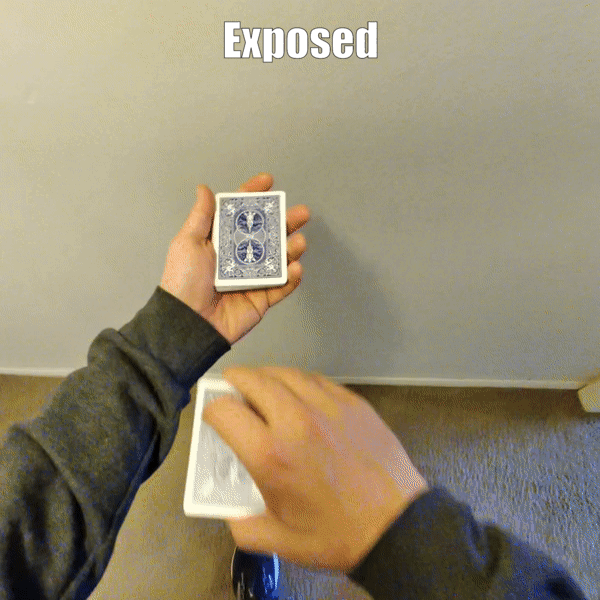Spex Mix: Small-Packet Palming Alternative
/Last month I wrote about the strength of having the spectator mix the cards, and how I believe it to be significantly more fooling than even the most well executed false shuffle. I’ll be collecting a number of these techniques in a series of posts called Spex Mix.
The technique I’m writing about today is one I use a lot when I don’t want to palm, and I don’t have a large surface area to work on, like in the Wash Replacement.
Start with the cards you need, for example four aces, on the bottom of the deck.
Ask your friend to take about half the deck.
Tell them to shuffle their cards and shuffle yours while they do.
Maintain your bottom stack by taking most of the cards above your stack and overhand shuffling them back on to the cards in your hand.
At some point stop shuffling, spread the cards in your hand a little and get a break above the bottom four cards.
Take your cards in right-hand Biddle grip, holding the break with your thumb.
Ask for their cards back with your left hand. Your left and right hand should be in a straight line between yourself and your friend.
In the process of handing your pack to the spectator to shuffle, let the cards below the break drop onto the half you just took back.
You don’t have to do this quickly if you don’t want. You can bring the hands together as if you’re just going to reassemble the deck and then say, “Actually, shuffle these cards too.”
You will then mix their half yourself without disturbing the stack on top. After that, reassemble everything and you’re all set.
A variation on this that I sometimes do is that I shuffle in a way that maintains my stock on the top of my half.
I turn my cards face-up and spread them between my hands, and make some sort of comment. Then, when I close up the spread I get a break above my stack and half-pass them, so it’s face down on the bottom of my face-up half.
Now when the packets come together, and I drop off my stack, it feels even more innocent because the half I’m handing to my friend is face-up, so it doesn’t seem like anything could be dropping off from my packet.
While I do this from time to time, it’s probably more just for my own amusement, I don’t think it’s a necessary “improvement.”
The technique is good for controlling up to 8 cards or so. Although the fewer, the better, as the more cards involved, the more likely it is for the change in packet size to be noted after the drop-off.
I assume this technique is fairly standard, but maybe not. I was describing it to someone over email who has a good bit of knowledge, and they hadn’t done this before.
I used to use it constantly with a borrowed deck, spectator cuts the aces routine.
Borrow the deck. Spread them face-up to “see if they’re all there,” cull the four aces, shuffle them to the bottom, use the technique above to allow the person to seemingly shuffle the whole deck, and then they cut the aces from their shuffled deck (Bannon’s Directed Verdict). For a non-magician, that’s a borrowed deck, shuffled by them, that they cut the aces out of. There’s no explanation for that.




